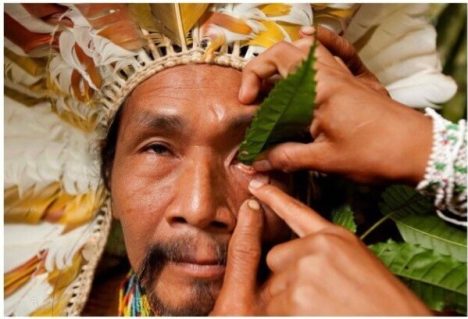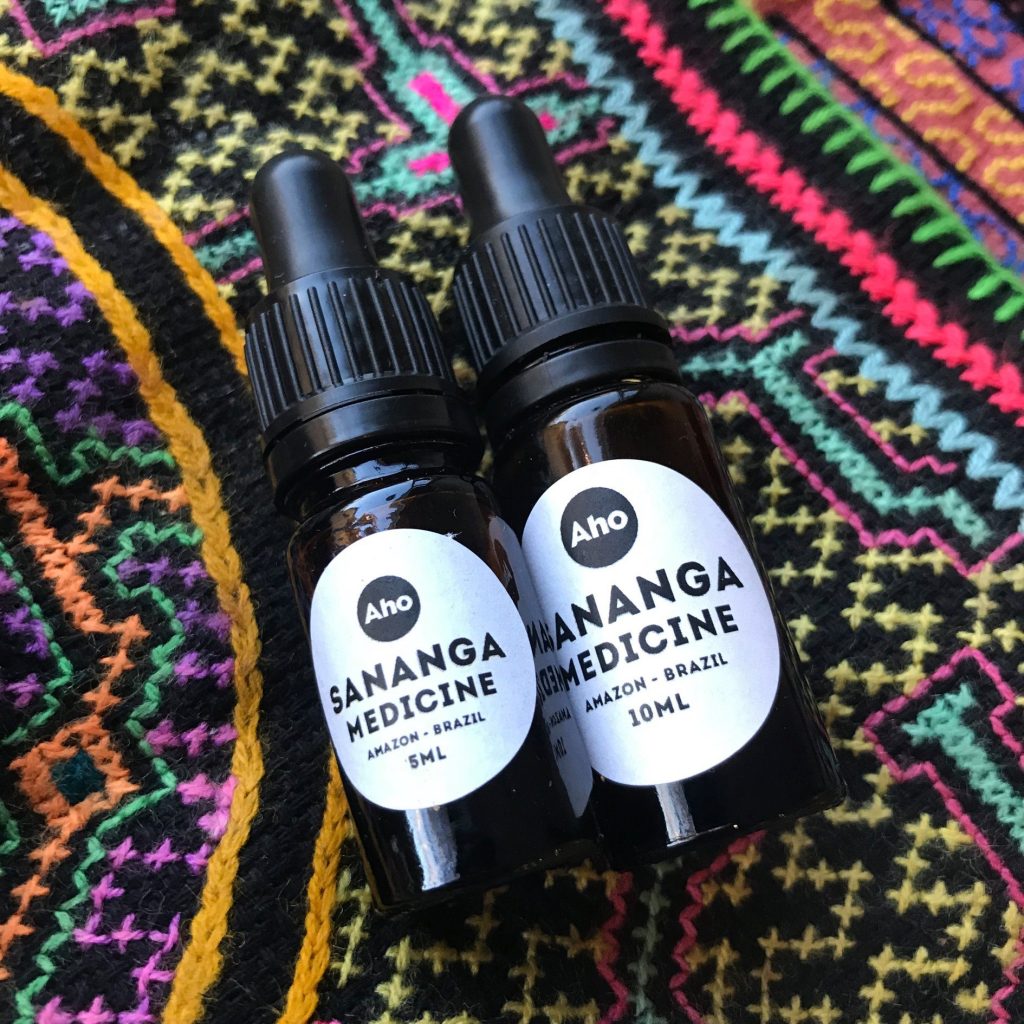Sananga Eye Drop – Everything from History and Benefits

The human quest for better vision and enhanced perception has driven the exploration of various natural remedies throughout history. Among these, Sananga eye drops, derived from the roots of Tabernaemontana sananho, a plant native to the Amazon rainforest, have gained significant attention for their potential benefits and cultural significance.
This comprehensive article delves into the rich history, diverse uses, and cultural context of sananga eye drops.
Historical Roots

Sananga eye drops have a long and fascinating history rooted in the indigenous cultures of the Amazon rainforest. The indigenous tribes of the Amazon have used Sananga as a part of their traditional medicine for centuries.
These tribes, such as the Matsés, Huni Kuin (Kaxinawá), and Katukina, have revered Sananga for its purported ability to enhance vision, improve hunting skills, and aid in spiritual and shamanic practices.
Here’s an overview of the history of Sananga eye drops:
- Shamanic and Spiritual Practices: Sananga is often used in shamanic and spiritual ceremonies. It is believed to enhance spiritual insight, promote lucid dreaming, and aid in connecting with the spirit world. In some cultures, Sananga is used to clear energetic blockages and prepare individuals for traditional rituals and ceremonies.
- Rituals and Traditions: Sananga is typically administered by a shaman or healer in a ritualistic setting. The eye drops are applied directly into the eyes, often inducing intense discomfort, burning sensations, tearing, and temporary vision impairment. These effects are believed to help cleanse and purify the eyes, body, and mind.
- Cultural Significance: Sananga holds deep cultural significance for indigenous communities. Its use is intertwined with their spiritual beliefs, folklore, and cultural identity. The knowledge of how to prepare and administer Sananga is traditionally passed down through generations within the tribe.
- Western Interest: In recent years, there has been growing interest in Sananga among individuals outside of indigenous communities, particularly in Western countries. Some people seek to explore its potential therapeutic effects, spiritual benefits, or complementary alternative medicine.
- Scientific Research: While there is limited scientific research on Sananga, some studies have started investigating its potential effects. Researchers are exploring its impact on eye health, pain relief, and psychological states. However, more rigorous research is needed to understand the benefits and risks associated with its use fully.
It’s important to approach Sananga and other traditional remedies with respect and cultural sensitivity. If you are interested in using Sananga, it’s recommended to consult with knowledgeable practitioners and consider both the conventional and scientific perspectives on its use.
Traditional Uses and Preparation

Sananga eye drops are prepared from the roots of the Tabernaemontana sananho plant, which are crushed and soaked in water to create an infusion. This infusion is then used as eye drops, typically administered by a shaman or experienced healer. The drops are placed directly into the eyes, inducing a powerful stinging sensation that lasts for a short duration.
In indigenous cultures, Sananga eye drops are used for various purposes:
- Enhanced Vision: One of the most well-known and traditional uses of Sananga is its potential to enhance vision. Indigenous tribes believe using Sananga eye drops can improve visual acuity, particularly in low-light conditions. This benefit is particularly valuable for hunting and navigating through dense forests at night.
- Anti-Inflammatory Properties: Sananga is believed to possess anti-inflammatory properties due to its active compounds. Some users report reduced redness, irritation, and discomfort in their eyes after using Sananga eye drops. These anti-inflammatory effects also have broader applications for addressing ocular health issues.
- Spiritual and Shamanic Practices: Sananga eye drops are often used in shamanic rituals and ceremonies to induce altered states of consciousness. The intense stinging sensation caused by the drops is thought to help shamans connect with higher realms, receive insights, and facilitate communication with the spiritual world.
- Emotional Release: The intense experience of using Sananga eye drops is said to help release emotional blockages and traumas. It is believed that the physical discomfort caused by the drops can trigger emotional catharsis, allowing individuals to process and release negative emotions.
- Cleansing and Energetic Balance: In indigenous cultures, Sananga is considered to have cleansing properties, both physically and spiritually. The eye drops are believed to clear negative energy (“panema”) from the body and promote overall energetic balance, contributing to well-being.
- Increased Awareness: Users of Sananga often report heightened sensory perception and increased awareness after using the eye drops. This enhanced sensory experience could be attributed to the temporary irritation and dilation of the pupils caused by Sananga.
- Connection to Nature and Ancestral Traditions: For indigenous communities, using Sananga is not just about its physical effects but also about maintaining a connection to their ancestral traditions and the natural world. The preparation and administration of Sananga eye drops are accompanied by rituals, chants, and prayers, reinforcing their cultural and spiritual significance.
- Mind-Body Connection: The intense and transformative experience of using Sananga eye drops is thought to facilitate a stronger mind-body connection. Users often describe feeling more attuned to their bodies and emotions, which can contribute to overall personal growth and self-awareness.
- Purported Healing Properties: Some proponents of Sananga claim that it has potential healing properties beyond the eyes, including addressing physical ailments and promoting overall wellness. However, more scientific research is needed to validate these claims.

Scientific Exploration
While the traditional uses of Sananga have been deeply ingrained in indigenous cultures, scientific research on its effects still needs to be conducted.
Some studies suggest that the active compounds in Sananga may have potential benefits, including anti-inflammatory and analgesic properties. However, more research is needed to understand its mechanisms of action and potential therapeutic applications fully.
Cultural Significance
Sananga holds a special place in the cultural heritage of Amazonian tribes. It is a medicinal remedy and a symbol of connection to their ancestral traditions and the natural world.
The preparation and administration of Sananga eye drops are often accompanied by chants, prayers, and rituals that reinforce the spiritual significance of the practice.
Sananga is a way for indigenous communities to preserve their identity and pass their knowledge to future generations.
Its cultural significance encompasses several dimensions:
- Spiritual and Shamanic Practices: Sananga is a potent tool indigenous healers and shamans use in shamanic and spiritual ceremonies. It is believed to enhance spiritual insight, cleanse energy fields, and facilitate communication with spirits and the spirit world. The intense burning sensation and temporary blurriness caused by the eye drops induce altered states of consciousness and open pathways to deeper spiritual realms.
- Rites of Passage and Initiation: In some indigenous cultures, sananga is used as part of initiation rituals, marking significant life transitions such as becoming a warrior, healer, or shaman. These rituals often involve other plants, chants, and practices, all of which contribute to the transformation and growth of the individual. 4.
- Cultural Identity and Connection to Nature: Sananga is a symbol of cultural identity and connection to the natural world for indigenous communities. It reflects their deep relationship with the rainforest and the plants that inhabit it. The use of sananga reinforces their cultural heritage, knowledge, and wisdom passed down from their ancestors.
As interest in traditional practices and plant medicine continues to grow, non-indigenous individuals have also begun exploring sananga for its potential benefits in terms of eye health and spiritual experiences. However, it’s crucial to approach sananga and other indigenous practices with respect, cultural sensitivity, and a deep understanding of their historical and cultural contexts.
Contemporary Interest
Recently, interest in Sananga eye drops has extended beyond the Amazon rainforest. People from various parts of the world have been drawn to its potential benefits, both as alternative medicine and as a personal and spiritual growth tool. As a result, Sananga has gained popularity in wellness circles and holistic health practices.
Conclusion
Sananga eye drops are a unique and intriguing aspect of indigenous Amazonian culture, deeply rooted in tradition and spirituality. While their historical uses have been primarily associated with enhanced vision and spiritual experiences, their potential therapeutic applications and contemporary interest have sparked curiosity and exploration beyond the rainforest.
As the world continues to embrace diverse healing practices, Sananga’s legacy as a profound natural remedy and cultural symbol remains a testament to the wisdom of indigenous traditions.






